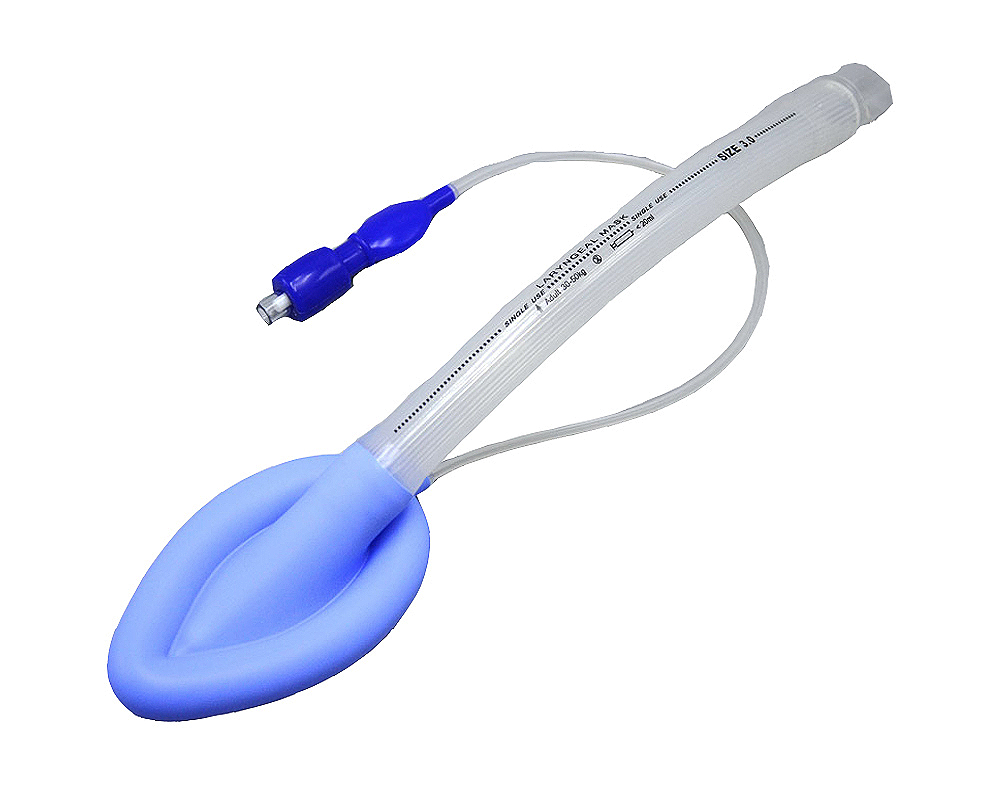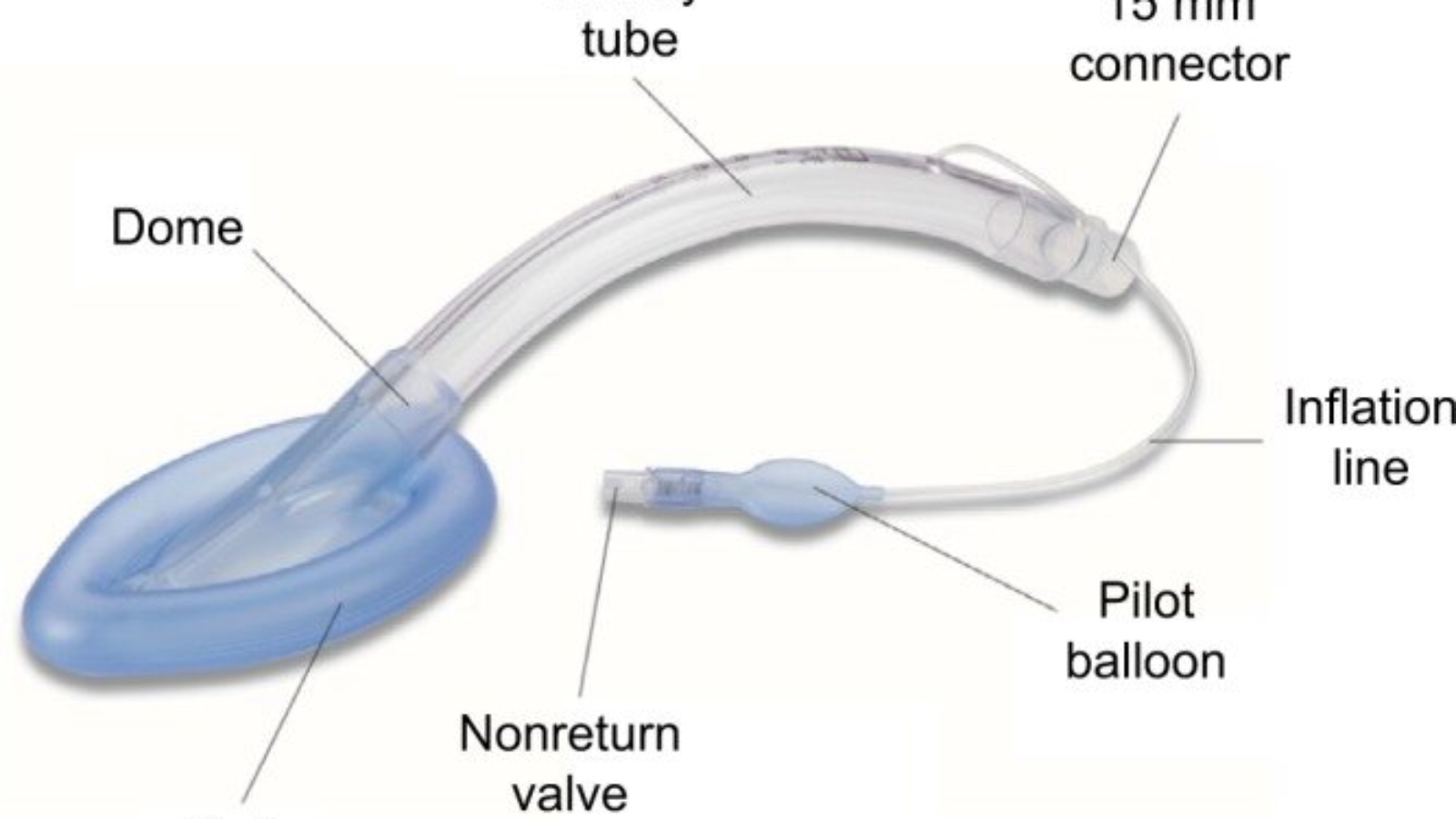Laryngeal Mask: From Selection to Use
What is a laryngeal mask and what is its use?
A laryngeal mask airway (LMA) is a medical device used to maintain a patient’s airway during surgery, anesthesia, or other medical procedures. It is designed as a mask that fits over the patient’s larynx and creates a seal to keep the airway open. Laryngeal mask airways have become popular as an alternative to endotracheal tubes due to their ease of use, reduced side effects, and greater patient comfort.
Types of laryngeal masks
Laryngeal masks come in a variety of types and sizes to suit patients with different conditions. Some common types of laryngeal masks include:
-
Laryngeal Mask Classic (LMA Classic):
This type of laryngeal mask is the oldest and best known type and is widely used in head and neck surgeries.
-
Disposable laryngeal mask:
This type of laryngeal mask is sterile and ready to use, and is suitable for reducing the risk of infection.
-
Pediatric laryngeal mask:
This type of laryngeal mask is designed specifically for children, and its size and shape are tailored to the anatomy of the children’s airway.
Laryngeal mask applications
Laryngeal masks are used in many medical procedures, including:
- Head and neck surgeries: In surgeries such as mouth, nose, and throat surgeries, the laryngeal mask airway is used as a safe and comfortable airway.
- General anesthesia: During general anesthesia, a laryngeal mask airway is used to maintain the patient’s airway and provide oxygen.
- Special care: In critically ill patients and those who cannot breathe spontaneously, a laryngeal mask airway can be used to maintain the airway.
Benefits of using a laryngeal mask
- Patient comfort: The laryngeal mask airway causes less discomfort to the patient than an endotracheal tube and reduces the risk of damage to the teeth.
- Reduced side effects: Laryngeal mask airways reduce the risk of aspiration (stomach contents entering the airways) and reduce laryngospasm.
- Ease of use: The laryngeal mask airway is easier to place than an endotracheal tube and requires less expertise.
How to use a laryngeal mask
Note: The use of a laryngeal mask should be performed by a physician or trained personnel.
- Patient preparation: Place the patient in the appropriate position and open their mouth.
- Choosing the right size: Choose the right size laryngeal mask based on the patient’s weight.
- Intubation: Gently insert the laryngeal mask airway into the patient’s mouth and guide it toward the larynx.
- Inflate the cuff: After the laryngeal mask is in place, inflate the cuff to create a seal.
- Verify correct placement: Verify correct laryngeal mask placement using a capnograph.
Safety tips:
- The patient must be fasting before using the laryngeal mask airway.
- If there is any difficulty in the patient’s breathing, immediately remove the laryngeal mask airway and take the necessary measures.
Possible side effects:
- Aspiration: There is a risk of aspiration if the laryngeal mask is not positioned correctly.
- Laryngospasm: In some cases, laryngospasm (involuntary contraction of the muscles of the larynx) may occur.
Buying a laryngeal mask and comparing raw materials
Buy a laryngeal mask
When purchasing a laryngeal mask, there are several important things to consider:
- Size: Choosing the right size laryngeal mask for each patient is very important. An inappropriate size can cause breathing problems or aspiration.
- Patient Type: Different laryngeal masks are designed for patients with different conditions. For example, pediatric laryngeal masks have special features.
- Material: Laryngeal masks are usually made of silicone or PVC. Each of these materials has advantages and disadvantages, which we will discuss below.
- Brand: Choosing a reputable and well-known brand can ensure that you are purchasing a quality and standard product.
- Health permits: Make sure the laryngeal mask has the necessary permits from the relevant health organizations.
Comparison of laryngeal silicone and PVC masks
Laryngeal masks are generally made from two main materials: silicone and PVC. Each of these materials has unique properties:
-
Silicone laryngeal mask:
- Advantages: Softer and more flexible, provides greater comfort for the patient, resists high and low temperatures, and is more durable.
- Disadvantages: Higher price than PVC, sensitivity to some chemicals.
-
PVC laryngeal mask:
- Advantages: More affordable, easy to produce, resistant to many chemicals.
- Disadvantages: Stiffer and less flexible than silicone, may cause patient discomfort, may deform at high temperatures.
The choice between a silicone and PVC laryngeal mask depends on several factors, including:
- Budget: If you have a limited budget, a PVC laryngeal mask airway may be a good option.
- Surgery Type: For long-term surgeries and patients who require more comfort, a silicone laryngeal mask airway is recommended.
- Physician Preference: Your physician will choose the best type of laryngeal mask airway based on their experience and assessment of the patient’s condition.

Comparison of laryngeal mask airway and endotracheal tube
Laryngeal mask airways and endotracheal tubes are two devices used to maintain a patient’s airway. Each of these devices has advantages and disadvantages:
- Laryngeal mask: ease of use, patient comfort,
- reduced side effects Endotracheal tube: better airway control, less aspiration possible in some situations
In what situations is a laryngeal mask used?
- Short-term surgeries
- Cooperative patients
- Patients with a normal airway
In what situations is an endotracheal tube used?
- Long-term surgeries
- Uncooperative patients
- Patients with airway problems
The choice between a laryngeal mask airway and an endotracheal tube depends on the physician’s decision and the patient’s condition.
To better understand the applications of laryngeal masks, we refer to a few case studies:
- Head and neck surgeries: In many head and neck surgeries, the laryngeal mask airway is used as the method of choice for securing the airway due to its ease of use and reduced side
- effects. Anesthesia in obese patients: In obese patients, the laryngeal mask airway can be a suitable alternative to endotracheal intubation, as endotracheal intubation may be associated with problems in these patients.
- Pediatric Anesthesia: In children, the laryngeal mask airway is considered a suitable option for airway management due to reduced stress and discomfort.

The results of these studies show that the laryngeal mask airway can be used as a safe and effective method of securing the airway in many cases.
Also read:
- Training on how to put on a laryngeal mask
- Sterilization of hospital equipment
- Best surgical clinics in Tehran
- Safety of working with a laminar hood in the laboratory
Frequently Asked Questions
- Is it painful to use a laryngeal mask? No, it is generally not painful to use a laryngeal mask. However, the patient may feel some slight discomfort when the laryngeal mask is placed.
- Is a laryngeal mask suitable for all patients? No, a laryngeal mask is not suitable for all patients. Some patients, such as those with abnormal airway anatomy or those with active bleeding, may not be suitable for use of a laryngeal mask.
- How long can a laryngeal mask be used? The length of time a laryngeal mask is used depends on the type of surgery and the patient’s condition. In some cases, a laryngeal mask can be used for several hours.
For more information and advice, you can consult your specialist.
- Rare complications of using a laryngeal mask
Although the laryngeal mask airway is known to be a safe and effective method of providing an airway, as with any medical procedure, rare side effects can occur. Some of these side effects include:
- Aspiration: If the laryngeal mask airway is not properly positioned, the risk of aspiration (the entry of stomach contents into the airway) increases.
- Laryngospasm: Involuntary contraction of the muscles of the larynx that may cause airway narrowing.
- Damage to teeth: In some cases, the patient’s teeth may be damaged.
- Pressure sores: If the laryngeal mask is used for a long time, pressure sores may develop around the lips or inside the mouth. Sore
- throat: After removing the laryngeal mask, the patient may feel a sore throat.
To reduce the risk of these complications, it is very important that the laryngeal mask airway is placed by a doctor or trained and experienced personnel.
- Comparison of laryngeal mask airway with other airway management methods
In addition to the laryngeal mask airway, there are other methods to secure the patient’s airway, including:
- Endotracheal tube: An endotracheal tube is a plastic tube that is inserted into the windpipe through the mouth or nose. An endotracheal tube provides more precise control of the airway but is more invasive than a laryngeal mask airway.
- Face mask: A face mask is a simpler device used for patients with stable conditions.
- Cricothyrotomy: An emergency procedure to create an artificial airway, used when endotracheal intubation is not possible.
Choosing the right method for securing the airway depends on several factors, including:
- Type of surgery
- Patient’s condition
- Doctor’s skill
- The future of laryngeal masks
As technology advances, laryngeal masks are expected to improve. Some possible developments in this area include:
- New designs: New designs of laryngeal masks may improve patient comfort and reduce side effects.
- New materials: The use of new materials with better properties may help improve the performance of laryngeal masks.
- New technologies: The use of new technologies such as sensors and cameras may help better monitor patient condition and improve safety.
In the future, laryngeal masks are expected to play an important role in securing the airway of patients.
Conclusion
A laryngeal mask airway is a valuable medical device used to maintain a patient’s airway during surgery and other medical procedures. It has become increasingly popular due to its ease of use, reduced side effects, and increased patient comfort. However, choosing the right type of laryngeal mask airway and how to use it should be done by a qualified physician.



دیدگاه خود را به اشتراک بگذارید